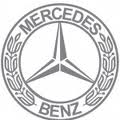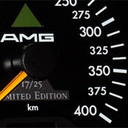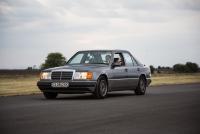ако чипа чупи колата ?
вграждането на турбината , ако няма какво прави ?
2 - 3 случая от 10ки хиляди чипосани коли ?
това прави ли го потенциално опасен ?
Ами в повечето случаи я чупи скоро  :D:D
:D:D
Колега Алфонсо от всичко което се изписа, е много важно да разбереш едно грубичко но все пак правило за мощността: POWER=PLAN (P-pressure- степен на сгъстяване на въздуха, L-с тази буква се бележи попринцип дължините на разни неща, в случая хода на буталото, A-с а често се бележи площ във физиката и къде ли не а А-то се използва за площ на буталото, и най-накрая N-често се използва обороти, и в този случай означава обороти на въртене на мотора). Би трябвало да ти стане ясно че най-често в чиптунинга се увеличава стойността на буквичката P (става въпрос за степента на сгъстяване и т.н. на двигателя). И адски много искам да те убедя в едно нещо: съвсем теоретично ако един двигател поеме да кажем с 15% повече въздух и ти му дадеш нужното гориво за да може да използва този въздух с възможно най-голямо КПД, няма ли да се получи едно РЕАЛНО увеличаване с 15% на мощността?
Ето ти го на един друг език който се надявам да разбираш и написано от един тип който бая колици е направил, и в оня новия континент (Америка) е смятан за много голям мозик, ама много голям братче:
Where does the power gain come from? What is the equation for the power of any given engine, and how does the turbo influence that equation? (Don't let equations scare you off—these are both neat and easy.)
It is revealing to examine the simple equation that relates power to the parameters describing the internal combustion engine.
Power = PxLxAxN
P is brake mean effective pressure, or bmep. An easy way to imagine bmep is as an average pressure pushing the piston down the bore.
L is the length of the stroke. This tells you how far the pressure is going to push the piston.
A is the area of the bore. This is, of course, the area the pressure has to work on.
N is the number of putts the engine makes in one minute. This represents how fast the engine is running and how many cylinders it has.
N = number of cylinders x rpm/2
(For a 4-stroke engine, the rpm is divided by 2 because each cylinder fires only on alternate revolutions.)
Now, there are several interesting relationships here! For example, take the P and multiply by the A and you have a pressure times an area, which is nothing more complicated than the average force pushing down on the piston. Now multiply the PA (force) by the length of the stroke, L (distance), and you have a number that represents the torque output of the cylinder Then take this figure and multiply by the N (how fast the job is getting done), and the result is
Power, the thing we are really after.
Please note that this means
Power = torque x rpm
Since the whole purpose of this exercise is to get more power, let's examine what this PLAN gives us to work with.
First, let's check out what working with the N can yield. There are two ways to get more putts per minute; add more cylinders or rev the engine higher That leaves little to work with, as the whole field of endeavor known as blueprinting: is almost solely for the purpose of allowing higher rpm with some degree of safety. Consider that those nasty inertial loads go up with the square of the rpm increase. That means that at 7200 rpm, the inertial toad will be 144% greater than at 6000 rpm. Wear and tear lies up there. Ultimately, it is neither cheap, pleasant, nor durable long-term to increase power output by increasing the N, Since we cannot, for practical reasons, increase power significantly with N, the only remaining choice is to increase torque by doing something with the PLA,
So we must go back and look at the PLA a bit more. We can change the A. Bored, it's called, but how much does it help? Change A by an eighth of an inch and maybe you'll gain 10%, Not worth the trouble. We can also change L. Stroked. Another 10%, maybe. Obviously, then, if we're pursuing real power, the A and the L don't hold much promise. Changing P becomes our only hope.
How to successfully change P is the crux of this hook. P can be changed by factors of 1.2, 1.5, 2, 3, 4, 5. .. The real potential is not known, since engineer types push the envelope every year. The Grand Prix racing cars of the '87 season took turbo development to the highest levels ever achieved, with power outputs of nearly 15 bhp per cubic inch. Suffice it to say, then, that doubling the power of a street engine, while not exactly child's play, is well within our reasonable expectations.
It is essential here to make clear the fact that we are dramatically increasing power without changing rpm. Therefore, it is torque (PLA) that we are really changing.
Сега по-горе исках да опиша че от изключителна важност е да разбереш че когато на един турбо-дизелов (най-често се прави в чиптунинга) мотор му дадеш повече въздух (в случая буквата P) и го нагодиш такаче да използва тая буква P максимално, той няма как да не изплюе повече кончета  И е много важно да знаеш че няма как един мотор какъвто и да е той да го надуеш с 10-15 % и той да сгъне след 1000км заради тях, просто нещата в инженерния свят не стоят така и за мен мотор който е натоварен с 10-15% отгоре на това от завода и сгъне просто сгъва заради заводски дефекти и т.н. Искам да знаеш че хората каращи без проблеми и доволни от правилния чиптунинг са десетки пъти повече от тези които не са доволни. PEACE бе братче!
И е много важно да знаеш че няма как един мотор какъвто и да е той да го надуеш с 10-15 % и той да сгъне след 1000км заради тях, просто нещата в инженерния свят не стоят така и за мен мотор който е натоварен с 10-15% отгоре на това от завода и сгъне просто сгъва заради заводски дефекти и т.н. Искам да знаеш че хората каращи без проблеми и доволни от правилния чиптунинг са десетки пъти повече от тези които не са доволни. PEACE бе братче! 


ПП: От изключителна важност е когато пишеш и си убеден в нещо, и някой ти каже точно обратното и успее да се обоснови с факти и т.н. да провериш втори път прав ли си или не си прав (бъди спокоен не сам на теб се случва  )
)
Този пост е редактиран от siriospepi: 03 октомври 2013 - 16:51
![]() Неискам да взимам страна т.к. имам по сериозен проблем от този с чиповете по мойта кола ( и нямам съфорумници които да ме посъветват
Неискам да взимам страна т.к. имам по сериозен проблем от този с чиповете по мойта кола ( и нямам съфорумници които да ме посъветват ![]() ) просто това е отговора ми на това което каза за Еко нормите, можеби и другите в мойто положение ще отговорят по същия начин. А и в края накраищата тези които са със StandAlone системи могат да докарат нещата до норми, просто ще позагубят малко зоб и все пак аз няма да съм от тия дето губят зоб
) просто това е отговора ми на това което каза за Еко нормите, можеби и другите в мойто положение ще отговорят по същия начин. А и в края накраищата тези които са със StandAlone системи могат да докарат нещата до норми, просто ще позагубят малко зоб и все пак аз няма да съм от тия дето губят зоб ![]()






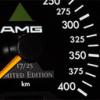

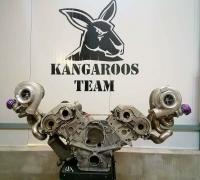


 Виж ГАРАЖА
Виж ГАРАЖА







